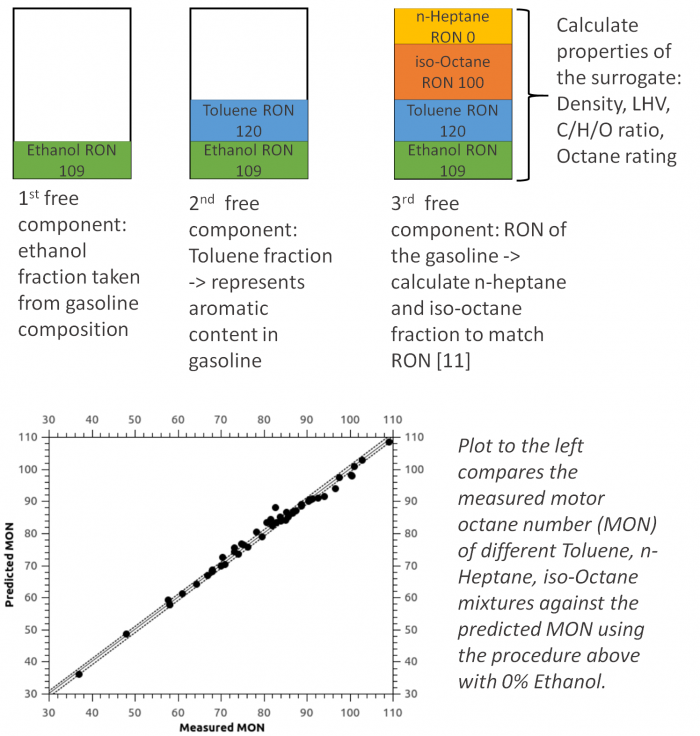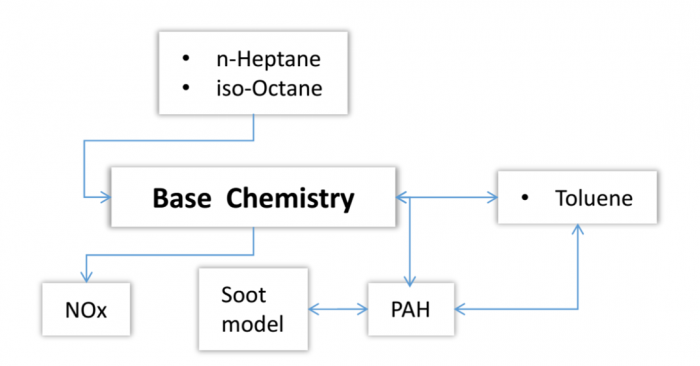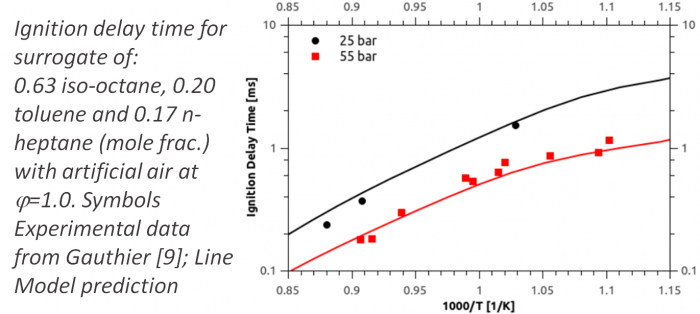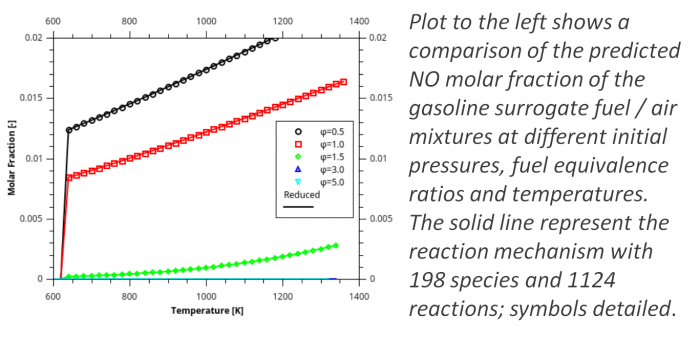Advanced combustion: Surrogate Composition, Mechanism Development and Reduction
Aim & Objectives:
The Gasoline surrogate model development aims to develop a complete tool chain for modelling gasoline combustion using a 4 component surrogate. This will enable efficient and accurate combustion modelling including the prediction of auto-ignition as well as NOx and soot formation.
Links to the results:
Deliverable: D1.x title
Publications: zenodo
Presentation: to Final event presentation
Gasoline Surrogate Model Development
Surrogate combustion needs to capture:
- Combustion behaviour
- Physical properties of the liquid
Requirements on surrogate model:
- Reaction mechanism to predict gas phase combustion
- Emmission prediction (Soot, NOx, Hyrocarbons)
- Short CPU times
Ethanol Toluene Reference Fuel formulation

Variable Mechanism Concept

Base chemistry: C1 to C6 chemistry based on [1 – 5]
NOx chemistry: modified model based Lamoureux et al. [6]
n-Heptane model: modified model based on Seidel et al. [7]n-Heptane model: modified model based on Seidel et al. [7]
PAH model: based on Moshammer et al. [8]
Detailed mechanism size: 476 species / 5160 reactions

Mechanism reduction
The detailed mechanism was reduced by lumping similar species and than removing uncessary species as described by Seidel et al. [10]. The mechanism was reduced to 198 species and shows a good agreement with the detailed mechanism for the predicted major emissions, auto-ignition, as well as NOx and soot formation. The reduction resulted in a speedup of factor 12.

Conclusions
A complete tool chain for modelling gasoline combustion using a 4 component surrogate was developed. This enables for efficient and accurate combustion modelling including the prediction of auto-ignition as well as NOx and soot formation.
References and nomenclature
[1] Oßwald, P. et al. 2011, ZPCH (255)
[2] Schenk, M. et al. 2013, Comb. & Flame (160)
[3] Seidel,L. et al. 2013, Molecules (18)
[4] Goos, E. et al. 2013, Proc. Comb. Inst. (34)
[5] Nawdial, A. et al. 2015, Proc. Comb. Inst (35)
[6] Lamoureux, N. et al. 2016 Comb. & Flame (163)
[7] Seidel, L. et al. 2015, Comb. & Flame (160) [8] Moshammer, K. et al. 2017, Proc. Comb. Inst (36) [9] Gauthier, B.M. et al. 2004, Comb. & Flame 139
[10] Seidel, L et al. 2017, J. Eng. Gas Turbines Power. 2017
[11] Morgan, N. et al. 2010, Comb. & Flame (157)


